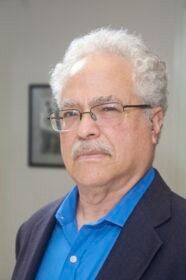Housing discrimination is a public health disaster — and we need widespread social mobilization to fix it
By George Lipsitz, author of The Danger Zone is Everywhere: How Housing Discrimination Harms Health and Steals Wealth
Nearly a century ago, Walter Benjamin observed that what those who live in comfort perceive as states of emergency are the normal conditions experienced by the oppressed. Throughout history, oppressed peoples have lived in zones where danger is the rule rather than the exception.
Today, new states of emergency seem to emerge daily. The environment, the economy, the electoral system, and the apparatuses of education are all in crisis. People in power cannot fix the things they have broken, cannot undo the damage they have done and continue to do to the planet and its people. They wage wars without end, stoke recreational hate, and promote vile and violent attacks on those most in need. The people of the world increasingly confront nightmares from which we cannot wake up — from the mass slaughter of civilians in the Middle East to families separated and children kept in cages on the U.S.-Mexico border. From elected officials adopting policies that criminalize reproductive rights and terrorize physicians supplying medically recommended care to trans people, to the global promotion of white nationalism, immigrant hating, and authoritarian rule by wealthy entrepreneurs and investors.
Because the danger zone is everywhere, health and housing injustices cannot be remedied by any single law, public policy, medical practice, or technological fix.
It is both tactically and morally imperative to do what we can to oppose these states of emergency and to stand with those most victimized by them. But that same tradition of the oppressed that Benjamin referenced teaches us that it is equally important to identify and transform the taken for granted social practices that produce hate, hurt, and fear and that make spectacular violence and exploitation seem inevitable. These practices can obscure the profound wisdom cultivated through the survival strategies of the oppressed.

In his great book Black Reconstruction in America, W.E.B. Du Bois shows how formerly enslaved people created the first real democracy the US nation had ever known by forging an active and engaged public sphere grounded in universal access to education, health care, voting, jury service, and economic opportunity. Their emphasis on democratic participation originated long before emancipation in the solidarity they forged at work, the aid they offered to those resisting or running away from bondage, and the ways in which prayers, songs, and dances enacted the collective freedom that the conditions of slavery forced them only to envision. That tradition of the oppressed has much to offer us today at a time when we need urgently to create new democratic practices, processes and structures.
My new book The Danger Zone is Everywhere: How Housing Discrimination Harms Health and Steals Wealth argues that residential racial segregation is both an economic injustice and a public health hazard. It contends that housing insecurity and its health consequences make up key components of an unjust, destructive, and deadly racial order. These dire racist injustices are effects of practices that might appear initially to be race neutral, such as decisions about zoning, construction of municipal and school district boundaries, artificially low home value appraisals coupled with artificially high tax assessments, insurance company algorithms, misdemeanor arrests and municipal fines, fees, and debts, flaws in legal and medical education, anti-drug laws, environmental pollution, and uninterrogated social science methods.
Because the danger zone is everywhere, health and housing injustices cannot be remedied by any single law, public policy, medical practice, or technological fix. They require the creation of an active and engaged multi-sphere public mobilization that recruits people to invent and implement new democratic practices in many different arenas. These initiatives are already well under way. In The Danger Zone is Everywhere, I call attention to the profound wisdom and powerful achievements of grass roots fair housing groups, health and healing arts collectives, environmental justice initiatives, community land trusts, autonomous learning circles, and community co-operative ventures. In the process of proposing short run, middle run, and long run remedies for health and housing injustice, these groups also challenge the dominant culture of competitive cruelty and avaricious individualism by establishing networks of mutual recognition and respect. They know that nobody can do everything, but everybody can do something.
Present day states of emergency are unlikely to be resolved from the top down. Indeed governments, corporation, and wealthy individuals have a direct stake in extending and exacerbating them. Social movement mobilization from the bottom up, however, has the potential to make new worlds possible—from showing that race is a political category and racism is structural, systemic, cumulative, and continuing, to establishing good health and good housing as public resources held in common rather than private commodities to be purchased at the highest costs. From having law and medicine honor the importance of precautionary principles to address foreseeable harm before it happens, to advancing democratic inclusion for all by building an active engaged public sphere for health and housing justice. The danger zone is everywhere, but that means that everywhere people are there is meaningful work to be done.
